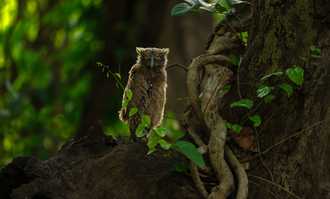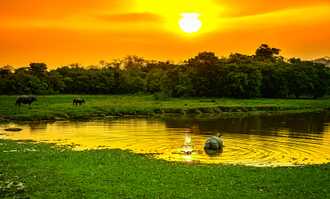Sundarban : The Forest Breathes and The Tiger Rules
The Wild Ballad of Sundarbans
In a forgotten corner of rural Bengal, where the land kisses the Bay of Bengal and the sky trembles with the fury of storms, lies a world unlike any other—the Sundarbans. Here, the forest isn’t just a sanctuary; it’s a battlefield cloaked in silence. Each root of the mangrove trees, rising like defiant sculptures from the mud, tells a tale of endurance. The creeks whisper ancient secrets, and the tides dance to a rhythm only nature understands—twice a day, without fail. Crabs scatter like fireworks, birds glide like fleeting thoughts, and somewhere deep within, predators and prey lock eyes in a game where hesitation means death. Yet, amidst this primal wilderness, life blooms. Islanders, hardened by storms and scarcity, rise with the sun and retire with the tide. Their daily lives blend with the roar of rivers and the rustle of the leaves. In the Sundarbans, beauty and danger are twins—entwined in an eternal embrace. It is a place where survival is the only truth, and the forest writes its own silent story each day.

The Land of Man-Eaters
In the forgotten bends of the Sundarbans, where tangled roots meet muddy tides, tales aren't just told—they live, breathe, and sometimes, devour. This is not merely a forest but a living myth where the messengers of death wear the stripes of the Royal Bengal Tiger, or slither like the King Cobra, or glide silently beneath the water as crocodiles and killer sharks. Here, the locals whisper that spotting one of these creatures means a shortened life, a bad omen. Yet, driven by thrill or curiosity, outsiders come searching for these beasts—blurring the line between reverence and recklessness.
In villages hidden within this labyrinth of creeks and shadows, death is not a stranger. Women break their bangles—symbols of marriage—each time their husbands leave to fish or gather honey, fearing they may not return. And yet, even after a brutal attack takes a father, a mother’s tears dry as she urges her son to walk the same deadly path—for hunger spares no home. In Sundarbans, every alternate doorstep carries a tragedy, yet life moves on. The man-eaters are feared, worshiped, mourned, and mythologized—shaping a reality too haunting to be fiction. This is the real Sundarbans—untamed, unexplored, where myth is born of blood and survival is the only religion.































